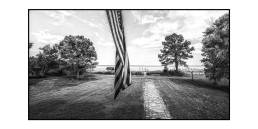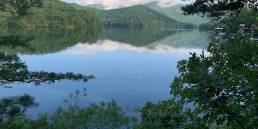
Bio:
Jason Houge (b. 1979; United States) uses photography to witness and document the events and experiences of a life lived today. He is best known for his social documentary photography, environmental portraiture and work with feral cats. His research draws from personal interests and past traumatic experiences to create compelling and haunting photographic stories within a broad range of topics including human rights, civil unrest, health care, hunger, music and the arts, scientific discovery and the environment. Early in his career, Houge was drawn to the idea of the “Concerned Photographer,” a genre of photography first described by Cornell Capa. However, in an effort to take this concept further, Houge developed an approach he calls Compassionate Photography to produce charged visual narratives from an empathic understanding of the people he photographs and the intersections they share with the environment, society and current political landscape.
Statement:
The culture of the American West, and more specifically, the Southwest, changed drastically in the last 100 years. Between the 1910s and 1950s gun slingers and dusty cowboys, lonely miners digging up nuggets of gold and silver, and the great rivers flowing from the northern mountains to the sea were replaced with military bases, bomb ranges, pit mines and gigantic dams that redirect those great rivers into basins for electricity production and later use. For indigenous peoples, the old ways gave way to new ways, land and water rights were further restricted and identities were actively stripped away. In the space of about 40 years, America fought in 2 World Wars and the Korean War, survived a pandemic, the airplane was invented, flown to war, upgraded with jets and rockets and turned into a symbol for the future. Hollywood sprang out of the desert and talents moved from New York to the gentler climate of the West Coast. Rock n Roll hit the stage and the automobile replaced horses and oxen, opening up possibilities. The 1950’s began an era of scientific innovation and economic boom.
In our own recent history of 40 years, mines dug 40 years prior have left huge scars on the land. Radiation from the hundreds of abandoned uranium mines and nuclear tests are now at toxic levels causing cancer across the region. Human populations continue to boom alongside giant dams and their sequestered rivers. Unfathomably large farms consume vast amounts of unregulated groundwater, reducing water availability elsewhere. The region’s largest rivers are now frequently dry, being diverted elsewhere. The Colorado River delta has dried out and died back, no longer receiving any water from the river upstream. Borders that were once lines in shifting sands have become great iron walls towering 8 meters high, blocking the passage of not only humans but migratory and native animals as well. Solar farms and server farms built to store personal data now occupy vast swaths of land, often replacing the many failed crop farms.
As a person alive today, I have great concern for my fellow humans and the impact we have on this planet. I am hopeful we are not damned to annihilation by the hard work of our ancestors as the influences of their work continues to impact the environment and the cultures we’ve encountered over the centuries. I believe some of the greatest changes yet will occur in the next 40 to 50 years, and that the work I’ve made today will help to measure the distances covered




